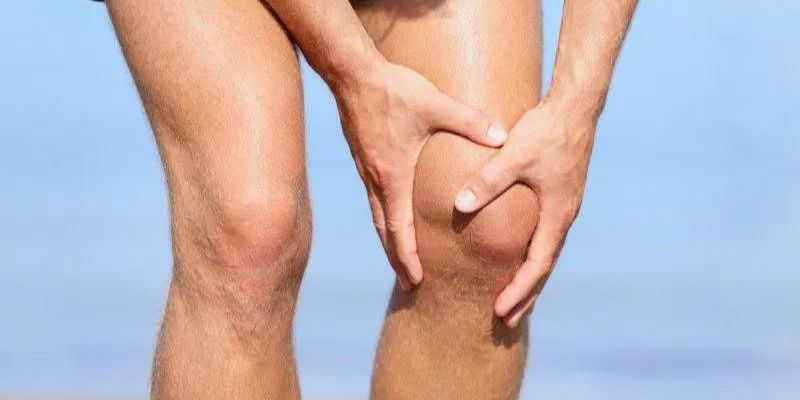Subchondral sclerosis is a common feature found in degenerative joint diseases and can lead to osteoarthritis if left untreated. It occurs when the underlying bone of a joint becomes thickened due to changes in the structure of the bones’ surface layer--known as sclerosis. Subchondral sclerosis compromises joint integrity, leading to increased pain, swelling, stiffness, and mobility issues.
Understanding this condition and how it manifests is essential for early diagnosis and effective treatment. In this post, we’ll delve into exactly what subchondral sclerosis is, explore its causes, discover its effects on the body over time, and discuss available treatment options so that you can make informed decisions about your well-being.
Define the Subchondral Sclerosis
Subchondral sclerosis is a common feature found in degenerative joint diseases, such as arthritis and osteoarthritis. It occurs when the underlying bone of a joint becomes thickened due to changes in the structure of its surface layer. This thickening, known as sclerosis, compromises joint integrity and can lead to increased pain, swelling, stiffness, and mobility issues if left untreated.
Subchondral sclerosis is often associated with aging but can also be caused by trauma or injury to a joint. It can affect any joint that experiences pressure or stress from everyday movements; however, it is most commonly seen in the hips, knees, feet, and ankles.
Causes of Subchondral Sclerosis
- As the body ages, joint cartilage becomes thinner, and bone density decreases, which can cause subchondral sclerosis.
- A single traumatic event or repetitive injury to the joint can lead to subchondral sclerosis over time.
- Excessive stress on weight-bearing joints due to obesity can cause the thickening of bone tissue in those areas and lead to subchondral sclerosis.
- Repetitive movement or pressure on one particular joint can gradually cause it to thicken, leading to subchondral sclerosis in that area.
- Some people may be genetically predisposed to developing subchondral sclerosis due to changes in their bone composition.
- Joint infection can affect the cartilage's structure and lead to bone thickening, resulting in subchondral sclerosis.
- Certain metabolic diseases, such as gout or pseudogout, can cause an accumulation of uric acid crystals around a joint that causes inflammation and can lead to subchondral sclerosis over time.
- In rare cases, bone tumors can cause localized thickening of the affected area and result in subchondral sclerosis.
- Some medications may be linked to the development of subchondral sclerosis in those who use them.
Risk Factors of Subchondral Sclerosis
- Subchondral sclerosis is often associated with natural aging and bone deterioration due to age.
- Excess weight on the joints increases pressure, leading to subchondral sclerosis in those areas.
- A single traumatic event or repetitive injury can cause joint damage over time, leading to subchondral sclerosis.
- Some people may be genetically predisposed to developing this condition due to changes in their bone composition.
- An infection of a joint can affect the cartilage's structure, leading to bone thickening and subchondral sclerosis.
- Certain metabolic diseases, such as gout or pseudogout, have been linked with the development of subchondral sclerosis.
- Bone tumors can cause localized thickening of the affected area and result in subchondral sclerosis.
- Using certain medications may be linked to the development of this condition.
- Repetitive movements on one particular joint can gradually cause it to thicken, leading to subchondral sclerosis in that area.
Symptoms of Subchondral Sclerosis
1. Pain
The most common indicator of subchondral sclerosis is pain in the affected joint area. This pain can range from mild to severe and may worsen with movement or physical activity.
2. Swelling
Swelling around the affected joint is another symptom associated with the thickening of bone tissue caused by subchondral sclerosis.
3. Stiffness
Joint stiffness is frequent for those suffering from subchondral sclerosis, limiting mobility in the affected area.
4. Reduced Mobility
Limited joint mobility and difficulty bending or straightening the affected limb are common symptoms of this condition.
5. Grating Sensation
When moving an affected joint, some people feel a grinding sensation or a clicking noise.
6. Deformities
In cases of advanced subchondral sclerosis, bone spurs may form, causing deformities in the affected joint area.
Diagnosing Subchondral Sclerosis
Diagnosis of subchondral sclerosis is typically made through physical examination and imaging tests such as X-rays or MRIs. During a physical exam, your doctor will examine the affected joint for swelling, tenderness, stiffness, and reduced range of motion associated with this condition.
They may also order imaging tests to confirm the diagnosis by looking at the thickening of bone tissue in the affected area. A blood test or a biopsy may be done to rule out other conditions that could be causing the symptoms.
Treatment of Subchondral Sclerosis
Treatment for subchondral sclerosis aims to reduce pain and swelling, improve joint mobility, and slow the progression of bone thickening. Treatment may include physical therapy exercises to improve range of motion and strength in the affected area, ice or heat applications to reduce inflammation, medications such as nonsteroidal anti-inflammatory drugs (NSAIDs) to reduce pain and swelling, corticosteroid injections for targeted relief from pain and inflammation, or surgery if necessary.
In some cases, lifestyle changes such as weight loss or avoiding activities that put stress on the affected joint can help slow down the progression of this condition.

Physical therapy is an integral part of subchondral sclerosis treatment, as it helps to improve strength and flexibility in the affected joint. Exercises such as stretching, range of motion activities, and strengthening exercises can help increase mobility and reduce pain. It is important to note that these exercises should be done under the guidance of a physical therapist for best results.
In addition to physical therapy, medications are often prescribed to help relieve symptoms of subchondral sclerosis. Nonsteroidal anti-inflammatory drugs (NSAIDs) such as ibuprofen can relieve pain and inflammation. Corticosteroid injections may also be used when NSAIDs do not relieve pain or swelling. These injections work by reducing inflammation in the affected area.
Surgery may be recommended in cases where conservative treatments are not providing adequate relief from pain and swelling, or when subchondral sclerosis is causing joint deformity. Surgery typically involves either removing bone spurs or repairing damaged cartilage. It is important to note that surgery should always be done under the guidance of a doctor experienced in orthopedic procedures.
FAQs
Is sclerosis the same as arthritis?
No, sclerosis and arthritis are two distinct conditions. Sclerosis is the thickening of the bone layer, while arthritis is inflammation in the joints.
What is the cause of subchondral bone sclerosis?
Subchondral bone sclerosis is usually caused by long-term wear and tear on the joint, repeated injury or trauma to the joint, excess weight on the joint, infections in a joint, metabolic diseases such as gout or pseudogout, certain medications, and genetic predisposition.
Is sclerosis a bone disease?
Yes, sclerosis is a bone disease caused by the thickening of the surface layer of bone. This can lead to joint pain, swelling, stiffness, and reduced mobility in the affected area.
Conclusion
Subchondral sclerosis is a condition caused by the thickening of the underlying bone in a joint. It can lead to pain, swelling, stiffness, and reduced mobility in the affected area. For early diagnosis and effective treatment, individuals must understand this condition and how it manifests. Treatment typically involves lifestyle modifications, physical therapy exercises, medications such as NSAIDs or corticosteroid injections, and surgery when necessary.





